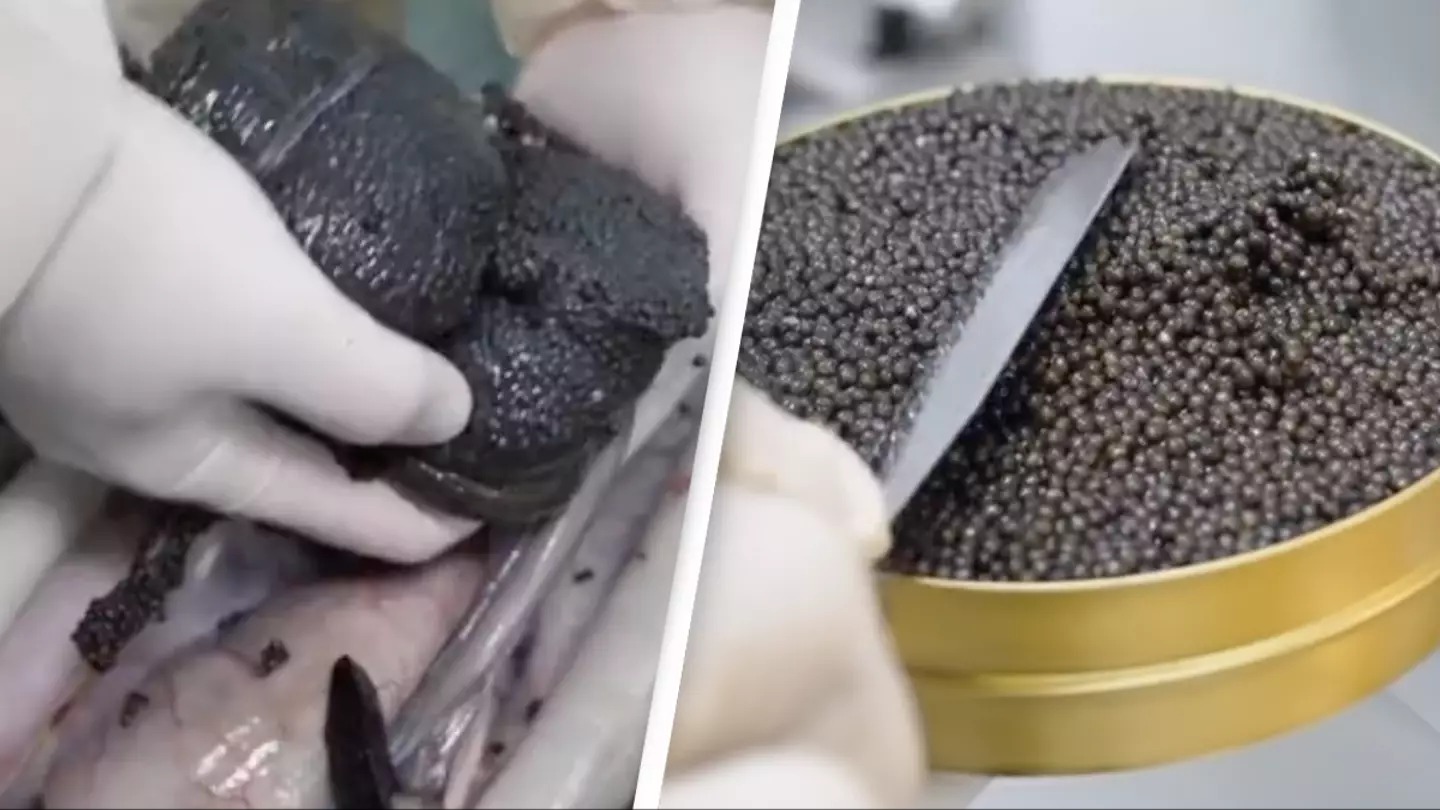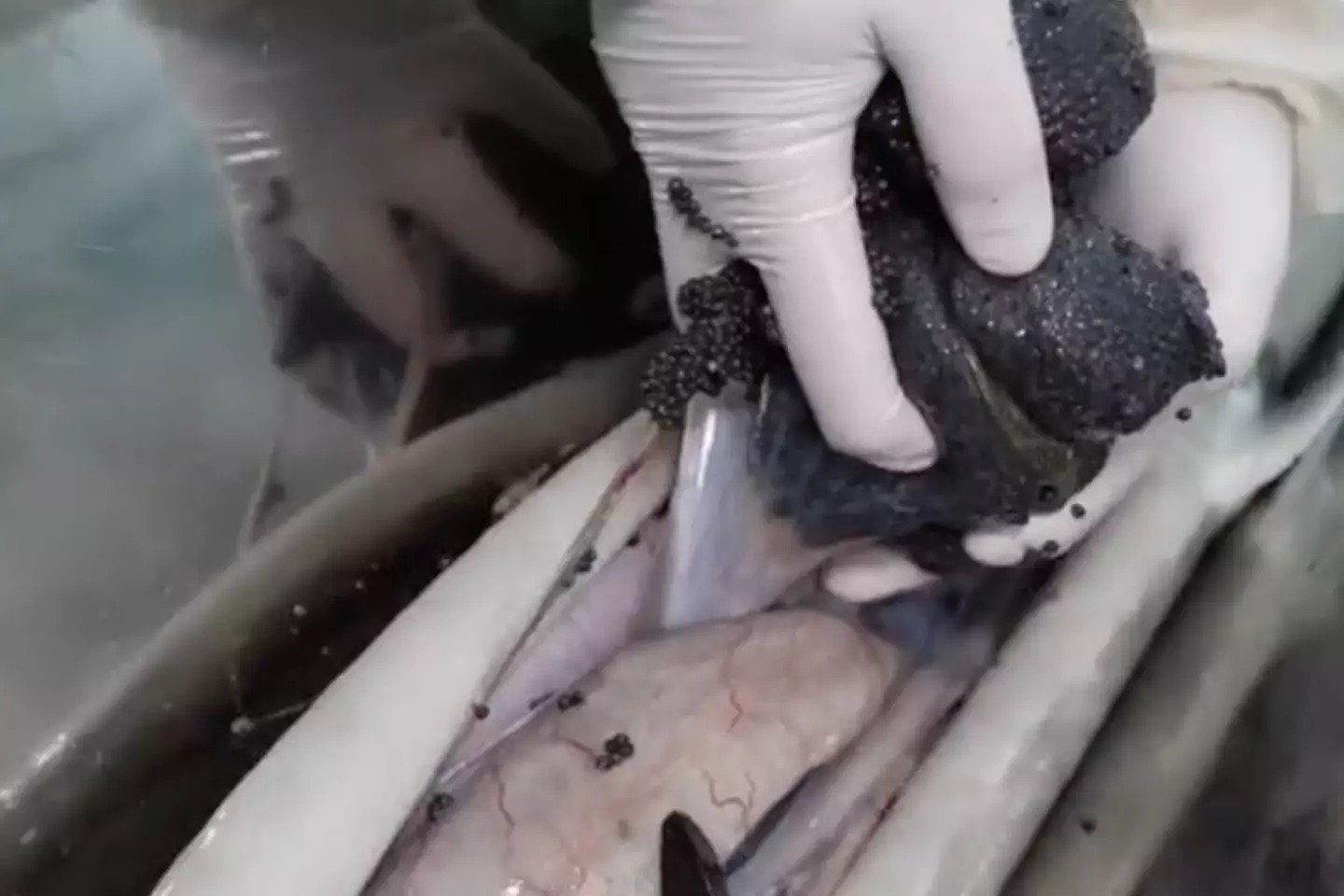While caviar might be luxurious, harvesting it is certainly not a pretty process.

People are flooding to social media in horror after realising how caviar is harvested.
While some struggle along buying baked beans and chance it on an old tin of soup at the back of the cupboard which went out of date several months ago, others aren’t feeling the pinch of the cost of living crisis so severely.
However, if you are the caliber of person who continues to dine on luxurious goods such as caviar while others scrape together their pennies, then prepare for this video to make you think twice:
For those of you who haven’t had to suffer the sorts of conceited events where people have pimped out their canapés with a topping of the stuff in an attempt to look sophisticated, caviar is the unfertilized eggs – also known as roe – of a fish called a sturgeon.
A video posted to TikTok by account @quepasa644 shows the harvesting of such roe and it’s fair to say it’s not a pretty sight.
The dead fish is sliced open from top to bottom down it’s centre using a sharp knife and the skin is then peeled back to the sides to expose a huge mound of black roe lying inside.

The footage then shows a pair of gloved hands grabbing the roe out, but getting caught on certain other inside parts of the fish, yanking at certain entrails, innards and who knows what else to get at what will later be sold as expensive caviar.
Bits of the inside of the fish with roe stuck to them are then rubbed up against a sort of sieve to shed the small balls off – imagine when you were four years old and decided to prod and poke a poor slug you found on your doorstep.
The caviar is then washed and sieved multiple times before any rogue white balls are tweezed out before the roe are coated in some white powder of some sort, mixed, popped in the fridge for a bit and then piled into tins to be sold.

One TikToker said: “I wonder who came up with ‘let’s eat fish eggs’.”
“I literally took my time watching this. Knowing damn well I still won’t eat it,” another added.
A third commented: “There is no way I can eat that.”
And a fourth wrote: “What a journey.”
So, anyone care to give the delicacy a try now you know how it’s farmed?












